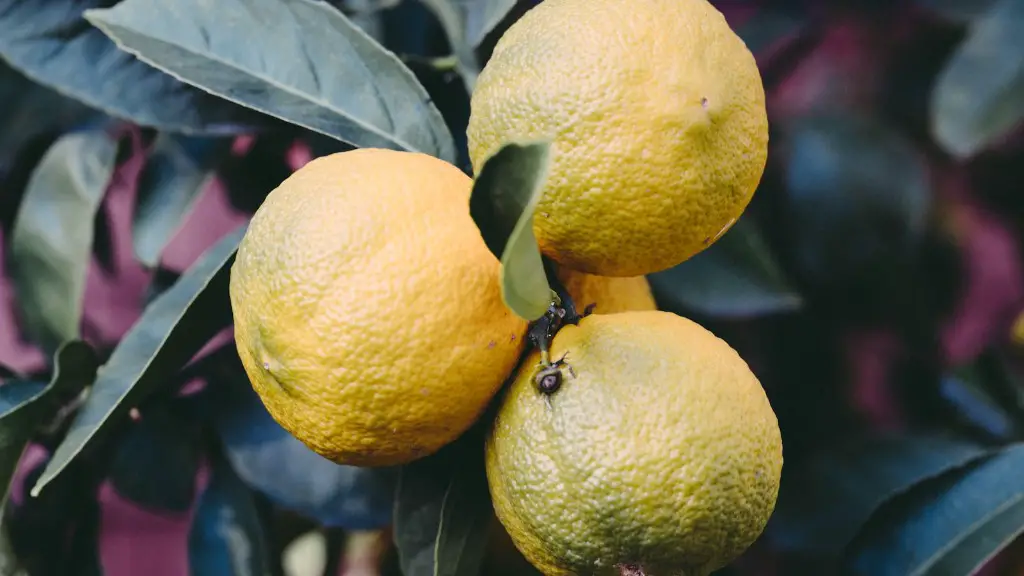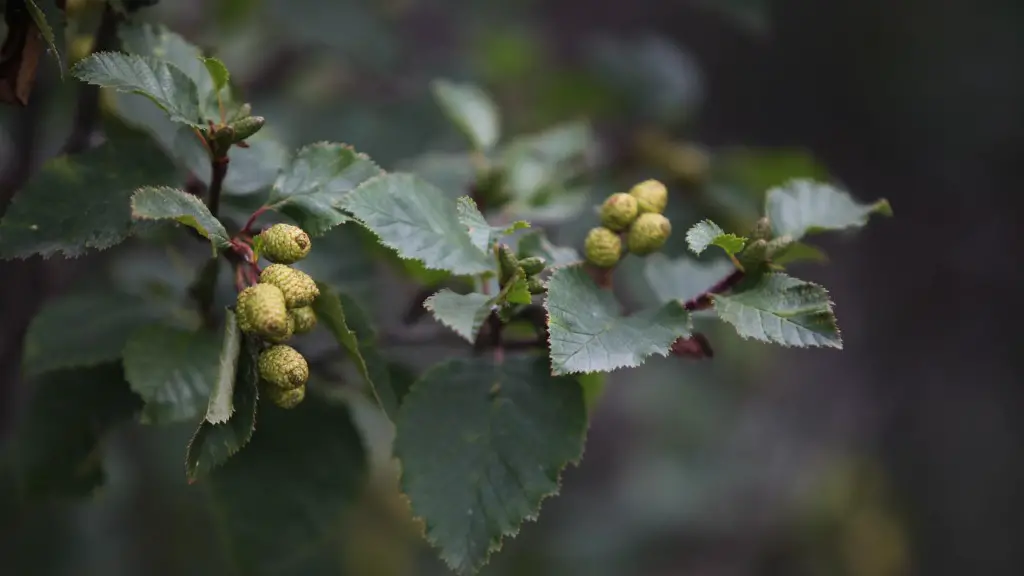Will a Lemon Tree Grown from Seed Produce Lemons?
Growing a lemon tree from seed is a popular and rewarding activity, as lemons have various culinary and medicinal uses. It is also possible to grow a tree from a lemon seed that will eventually bear fruit, but it is important to understand that the process is somewhat unpredictable and the timing of harvest is uncertain. Lemon trees grown from seed will require quite a bit of patience, as it can take anywhere from 3-6 years for the first flowers and fruits to appear.
The success rate of growing lemons from seed is also very low and can be annoying as much of the time, the fruits borne on the plant may not taste pleasant. In addition, the tree grown from seed has a much greater chance of being a sour lemon, rather than being sweet and juicy like store-bought lemons. It is also possible that the tree will not bear any fruit at all.
It is possible that the lemon tree may take up to 8 years to reach maturity and bear fruit, and it is worth noting that the fruits will not be the same as those found in stores. Many gardeners have also reported that the lemons from their lemon tree can have odd shapes, such as being long and thin, or having misshapen lobes. It is not uncommon for lemon trees grown from seeds to have fruits with thick and leathery skin.
Additionally, the tree grown from seed may be much smaller than it would be if purchased as saplings. Most importantly, due to the nature of the process, it is not possible to tell beforehand how many fruits a tree grown from seed may yield or when the harvest may occur, which often makes it difficult or impractical to rely on such a tree for consistent supply of citrus.
Generally, stronger and larger fruits tend to be found on grafted trees, but if the gardener is more interested in the process of growing a lemon tree from seed, the sentiment and reward of the experience may make up for the disadvantages. All in all, growing a lemon tree from seed is an exciting and potentially rewarding activity, and ultimately it may bear sweet and juicy lemons, but it is important to be patient and prepared for potential disappointment.
Why People Decide to Grow Lemon Trees From Seed
Many people decide to grow lemon trees from seed primarily out of curiosity and a desire to see the process through to fruition. Another important factor is the potential cost savings, as compared to buying a lemon tree as a sapling. Another benefit is that by growing their own lemon tree, they can be sure of the source, and that there are no unknown chemicals or treatments applied to the tree.
Many gardeners also decide to grow their own tree from scratch as a creative activity, something that can be very rewarding in terms of the experience. Additionally, many people find that being able to witness the entire process of growing a tree from seed to a fruit bearing tree can be an experience on its own.
Many people also appreciate the self-sufficiency that comes from growing lemon trees from seed, as the tree can provide a steady source of lemons, regardless of the availability in stores or markets. In some regions, there may be few options available to purchase a lemon tree, or they may not be growing the same variety or cultivar desired. In such cases, growing a tree from seed is a viable solution.
Finally, some people may also find it more environmentally friendly to grow their own lemon tree, as it lessens their dependency on the industrial food network, which may otherwise involve heavy carbon footprints. In any case, growing a lemon tree from seed can be a rewarding activity that comes with its own set of uncertainties.
What to Consider When Growing a Lemon Tree from Seed
When growing a lemon tree from seed, there are several steps that must be taken in order for the process to be successful. First and foremost, the lemon should be placed in a potting medium that drains well, as it is important to ensure that the roots are allowed to spread and the soil is kept free of waterlogging. Additionally, the pot should be either placed indoors or in the shade, and should be kept away from direct sunlight, wind, and extreme temperatures.
The potting soil should be slightly acidic in order to encourage lemon growth, and it is important to research the different types of soil that may be suitable for growing lemons. When planting the lemon in the pot, make sure to plant it with the root side facing down, as planting it with the stem down can result in the rotting of the root system. It is also important to water the plant regularly, but only enough to keep the environment moderately damp.
The pot will also need to be regularly fertilized with a balanced fertilizer in order to ensure that the tree is getting all of the nutrients that it needs to grow into a healthy and fruitful tree. Additionally, it is important to ensure that the tree is regularly pruned in order to promote new growth, as this can also help maximize the yield of the tree. Additionally, it is important to check for pests or diseases that may be affecting the lemon tree, as this can have a drastic effect on the outcome.
Limitations of Growing Lemon Trees From Seed
When growing a lemon tree from seed, one of the main limitations that needs to be taken into account is the time it will take for the tree to reach maturity, which can be anywhere from 3 to 8 years. Additionally, there is no guarantee that the tree will yield any fruits or that the fruits it produces will be of good quality, as lemons can sometimes be sour or have thick and leathery skin.
Another important limitation to consider is the cost of growing a lemon tree from seed, as the cost of the seed, soil, and fertilizers can add up quickly. Furthermore, there is a high possibility of failure, as the survival rate of lemon trees grown from seed is very low. Additionally, due to the unpredictability of the timing of harvest, it may be difficult or impractical to rely on such a tree for a consistent supply of citrus.
Finally, it is important to bear in mind that the lemon tree can only produce during certain months of the year, and during other periods, it may not produce any fruits at all. In some cases, the tree also may not produce in the same year, as it typically takes anywhere from six months to a year for a tree to bear fruits.
Care and Maintenance of Lemon Trees Grown From Seed
When growing a lemon tree from seed, it is important to provide adequate care and maintenance in order for it to grow strong and healthy. This includes providing the tree with plenty of water and fertilizers, pruning it regularly to promote growth, and controlling pests and diseases that may affect the tree. It is also important to ensure that the potting soil is not waterlogged, and to check for signs of root rot.
In addition to this, it is important to ensure that the tree is not exposed to any extreme temperatures or direct sunlight, as this can weaken the tree and make it vulnerable to stress. Additionally, some lemon trees may require additional training, such as staking and tying, in order to prevent the branches from breaking due to the weight of the fruits. All in all, providing a lemon tree with proper care and maintenance is essential for the tree to reach its full potential.
Pest and Disease Management for Lemon Trees From Seed
When growing a lemon tree from seed, it is important to consider pest and disease management as it can drastically affect the health of the tree. The most common pests that may affect a lemon tree are aphids, mites, and Scale insects. These can be controlled by using horticultural soaps, neem oil, and even beneficial insects like ladybugs and praying mantis.
Other diseases that can affect a lemon tree are fungal diseases such as brown rot, leaf spot, and anthracnose. These can be managed by removing affected leaves and branches, as well as through the use of fungicides. Additionally, it is important to ensure that the tree is not overwatered, as this can also lead to root disease. All in all, regular inspection of the tree for signs of pests and diseases, and prompt action when needed, can help ensure that the tree is healthy and productive.
Harvesting Lemons From Seed-Grown Lemon Trees
Harvesting lemons grown from seed is a different experience than harvesting store-bought lemons, since the lemons borne on the tree may not be regularly-shaped or as sweet. When deciding when to harvest the lemons, it is important to look out for signs that the lemons are ripe such as a yellow-orange color, fragrant aroma, and slightly soft texture, and to be patient as it may take anywhere from 3 to 8 years for the tree to bear fruits.
When the lemons are ripe, it is important to inspect the tree and pick any fruits that are visibly affected by pests or diseases. It is also important to wear gloves when harvesting, as the tree may be home to pests or other health hazards. Additionally, when harvesting, it is important to use pruning shears or scissors to avoid damaging other parts of the tree.
Finally, when harvesting the lemons, it is important to ensure that the remaining fruits are still ready for harvest, and that the ripened fruits are not left to rot on the tree. All in all, harvesting the lemons grown from seed is an exciting joy, but the experience will likely depend on the care, maintenance, and patience that went into the process.




